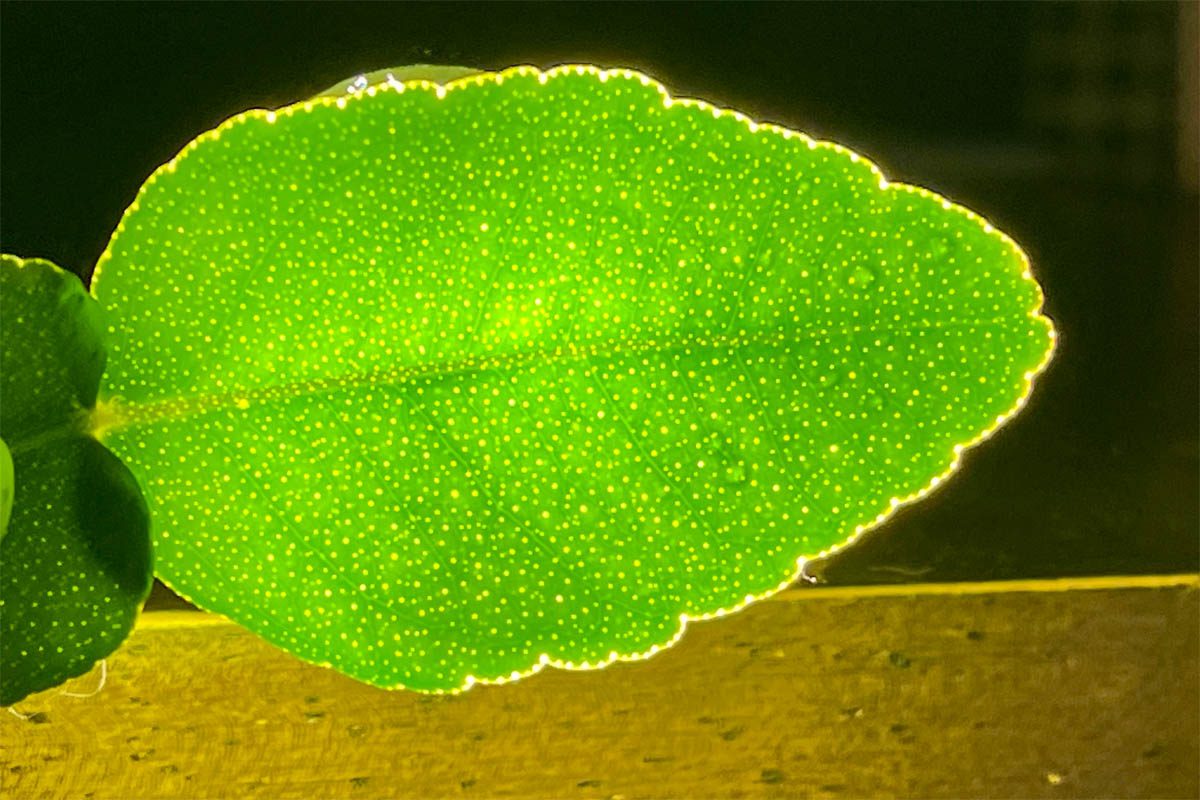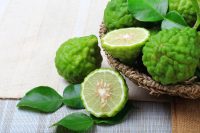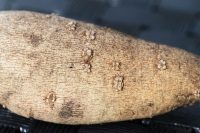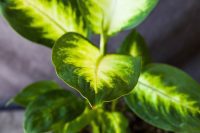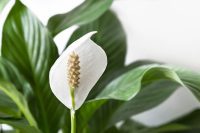Also known as ‘translucent’ or ‘oil glands‘, pellucid dots are specialised glandular cavities that can be seen on the leaves, peels and fruit of certain plants, in particular the Rutaceae (citrus) family. They are visible as small translucent spots or lines on the leaves. Pellucid dots can be difficult to see with the naked eye, but a magnifying glass or torch shone behind the leaf can reveal them.
Pellucid dots are made up of special cells called idioblasts, which are different from the surrounding cells in size, shape, and content. Idioblasts are characterised by their ability to synthesise and store unique compounds, which can include oils, crystals, latex, resins, mucilage, and pigments.
In citrus plants, pellucid dots are packed with essential oils, which are responsible for the plant’s distinctive aroma. They are often visibly noticeable as tiny, clear or translucent dots on the leaf or peel surfaces. When the idioblasts are ruptured (for example, when you squeeze a lemon or lime), the volatile oils are released, producing the citrus scent we associate with these fruits.
The term “pellucid” comes from the Latin word “pellucidus“, which itself is derived from “per-” meaning “through” and “lucidus” meaning “clear or bright”. Thus, “pellucidus” can be translated to mean “very clear“.
What is the function of pellucid dots?
- Fragrance: Perhaps the most recognisable function of these oil glands is the fragrance they impart to the plant. When the oils stored in these glands are released, they produce the characteristic aroma associated with the plant. In citrus plants, for instance, these oils give off the fresh, zesty scent we associate with fruits like oranges, lemons, and limes. The fragrance emitted from the essential oils within these glands can attract pollinators such as bees, butterflies, and other insects. This is crucial for the plant’s reproduction as it aids in the transfer of pollen from the male parts of a flower to the female parts, enabling fertilisation and the production of seeds.
- Defence mechanisms: The essential oils can serve as a natural deterrent against herbivores and pests. The strong aromas, tastes, or even toxic or irritating effects of these oils can discourage animals from eating the plant, and can also repel certain pests.
- Antimicrobial properties: The oils in these glands often have antimicrobial properties, protecting the plant against a variety of pathogens. This defence mechanism can reduce the plant’s risk of infection by bacteria, fungi, and other harmful microorganisms.
- Competition for resources: Strong fragrances can also be a way to compete with other plants for resources. Some scents can inhibit the growth of surrounding plants, reducing competition for water and nutrients.
- Thermoregulation: Emerging research suggests that these oil glands may also play a role in controlling leaf temperature, contributing to the plant’s overall thermoregulation and possibly aiding in its survival under different environmental conditions.
How do plants form pellucid dots?
Pellucid dots form during the early stages of leaf development. They arise from meristematic tissue, a type of plant tissue consisting of undifferentiated cells that are capable of dividing and developing into various types of specialised cells.
When a leaf is first forming, it starts out as a small group of cells. As these cells divide, they begin to differentiate into the various types of cells that make up the leaf. Some of these cells are destined to become the basic tissue of the leaf, while others are set to become specialised structures like veins, stomata, or pellucid dots. In the case of pellucid dots, certain cells in the developing leaf begin to divide more frequently than others. Cells that divide more frequently form a small cluster, set aside from the surrounding tissue. Following the instructions in the plant’s genetic code, these clusters of cells begin to differentiate into a unique structure – the precursor to the oil gland.
These precursor structures continue to develop as the leaf grows and fill with essential oils or other compounds, which are produced by the plant’s metabolic processes and transported to these cells. Over time, these structures mature into fully-formed oil glands that are visible on the surface of the leaf or fruit.
The formation and distribution of pellucid dots can be influenced by several factors, including plant genetics, environmental conditions, and even the stage of development of the plant tissue. These glands are formed early in leaf development and their formation is completed before the leaf reaches its full size.
What plant species have pellucid dots?
Pellucid dots or oil glands are present in several plant families.
- Rutaceae: The family that includes citrus trees (lemons, oranges, limes) is probably the most well-known for having these oil-filled glands. However, other members of this family like rue (Ruta graveolens), mock orange (Philadelphus spp.), and Zanthoxylum spp. also possess these pellucid dots.
- Myrtaceae: This family includes the eucalyptus, guava, and allspice. Many of these plants are aromatic and have oil glands.
- Lamiaceae: Also known as the mint family, this group includes aromatic herbs like rosemary, sage, thyme, basil, and, of course, various types of mint. Many members of this family have oil glands in their leaves.
- Asteraceae: This is the daisy family, which includes many aromatic plants, like yarrow and chamomile. Some members of this family have oil glands, but they might not be as obvious as in the families listed above.
- Lauraceae: This is the family of the laurel tree and includes other trees like cinnamon and avocado. Some of these species have oil glands.
- Cannabaceae: Cannabis plants, particularly Cannabis sativa, contain glandular trichomes which are akin to oil glands and are responsible for the production of cannabinoids and terpenes, providing the plant with its unique aroma and properties.
While these plants have pellucid dots or oil glands, they might not always be visible to the naked eye. In some cases, you might need a magnifying glass or microscope to see them. These glands can also differ significantly in terms of their content and the compounds they produce, depending on the specific plant species.
Conclusion
- Pellucid dots act as microscopic factories in plants that produce and store essential oils.
- These structures play a critical role in the defence mechanisms of plants. They deter pests and protect the plant against pathogens.
- The fragrance from these essential oils, released by pellucid dots, attracts beneficial pollinators, assisting in the plant’s reproductive process.
- These oils also facilitate communication between plants and provide a competitive advantage in their environment.
- Apart from essential oils, pellucid dots store a variety of substances like mucilage, resins, and tannins, contributing to the plant’s survival strategies.
- The presence of pellucid dots underscores the complexity of plant adaptations, highlighting the significance of even minute structures in ensuring plant resilience and survival.
Julia is a writer and landscape consultant from Wollongong with a love of horticulture. She had been an avid gardener for over 30 years, collects rare variegated plants and is a home orchardist. Julia is passionate about learning and sharing her knowledge of plant propagation and plant toxicology. Whether it’s giving advice on landscape projects or sharing tips on growing, Julia enjoys helping people make their gardens flourish.
